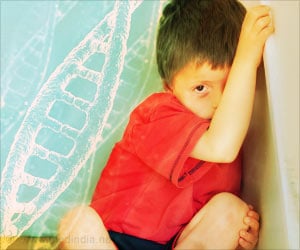
Early signs of autism are not translated into autism diagnosis later on, and also the symptoms significantly reduced with the therapy that encourages better social interactivity in the babies.
“The use of iBASIS-VIPP resulted in three times fewer diagnoses of autism at age three,” Professor Whitehouse said. “No trial of a pre-emptive infant intervention, applied prior to diagnosis, has to date shown such an effect to impact diagnostic outcomes -until now.”
Professor Whitehouse said many therapies for autism, tried to replace developmental differences with more ‘typical’ behaviors. In contrast, iBASIS-VIPP sought to work with each child’s unique differences and create a social environment around the child that would help them learn in a way that was best for them.
Spectrum disorders like autism have no cure so far and there are no medications to treat. Many of the toddlers, who are on the boundary of the diagnosis, are falling in and out of the classification for autism diagnosis.
In this situation, another study reveals that the mothers of the children diagnosed with autism, delay their next pregnancy by at least a three year interval to reduce the chances of the next newborn having the same condition.
READ RELATED: Katy Perry feared she 'wouldn't live to see 2018' during past depression battle
Role playing and verbal interaction with these children help them to show betterment marginally. To reduce the rate at which people are affected because of the neurological developmental disorders of this kind is a significant feat achieved. The therapy that treats the babies earlier shows promising signs.
We also found increased parental sensitivity to their baby’s unique communication and an increase in parent-reported language development. Other general aspects of development were not affected.
“The children falling below the diagnostic threshold still had developmental difficulties, but by working with each child’s unique differences, rather than trying to counter them, the therapy has effectively supported their development through the early childhood years.”
Source: Medindia
Source:








